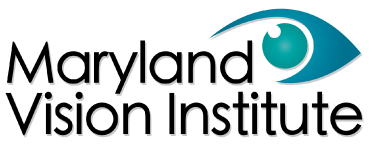Can I Reverse Presbyopia Without Surgery?
March 28, 2024
hey say that wisdom comes with age. But along with wisdom, age also brings new challenges to clear eyesight.
One of these challenges is presbyopia. Developing presbyopia can make reading texts on your phone or the menu at your favorite restaurant difficult without holding them at least an arm's length away from your face.
Keep reading to learn more about presbyopia, including whether or not you can reverse it without surgery!
 What is Presbyopia?
What is Presbyopia?
Presbyopia is an age-related eye condition caused by the hardening of the eye's natural lens. It is yet another part of the aging process, and it affects the eye's ability to focus on objects that are close by.
Presbyopia is extremely common in older adults. After age forty-five, it is estimated that around eighty to ninety percent of adults have some degree of presbyopia.
Presbyopia is not the same as farsightedness or hyperopia. Where presbyopia is caused by changes to the eye's lens, farsightedness is caused by the shape of the eye and its ability to focus light.
What Are the Signs of Presbyopia?
Signs of developing presbyopia include the following:
Difficulty Focusing on Close Objects
The most obvious sign of presbyopia is difficulty focusing on close objects. This can make it challenging to engage in everyday activities, such as reading a book or newspaper, looking at a phone, or doing other close-up tasks.
 Eyestrain and Headaches
Eyestrain and Headaches
People with presbyopia may cope with their changing eyesight by straining their eyes to see clearly. This strain can lead to both eyestrain and chronic headaches.
Print Appears Blurred
As people develop presbyopia and their near vision is affected, small print may suddenly appear blurry. Individuals with presbyopia may find that they have to hold reading material further and further from their eyes in order to see it clearly, or they may have to increase the font size on computers and other electronic devices.
Changes in Eye Prescription
Another sign of presbyopia is changes to glasses prescriptions. Some of the changes may include the need for reading glasses, bifocals for individuals with near- or far-sightedness, and contact lenses that can focus at least two distances.
Are you experiencing vision changes?
Is Presbyopia Reversible Without Surgery?
The short answer to the question of whether presbyopia is reversible without surgery is no. The changes are permanent once the eye's lens has started to harden and lose flexibility with age.
However, there are two procedures that can restore your vision that's been altered by presbyopia: laser lens replacement, also called refractive lens exchange, or RLE, and cataract surgery. While both surgeries use a similar procedure, their goals differ.
RLE and Cataract Surgery
RLE is a vision-correcting procedure in which the natural lens of the eye is replaced with an artificial intraocular lens (IOL). RLE can permanently correct presbyopia as well as the most common refractive errors: nearsightedness, farsightedness, and astigmatism.
Presbyopia can also be corrected during cataract surgery. Like RLE, in cataract surgery, the natural lens of the eye is removed and replaced with an IOL.
While the primary goal of cataract surgery is to restore vision affected by cataracts, depending on the IOL a person chooses, it can also permanently correct presbyopia. One of the additional benefits of RLE or even developing in the first place.
During RLE and cataract surgery, an eye surgeon uses an advanced technology laser to remove the eye's natural lens and replace it with your IOL of choice. Both are relatively quick procedures, taking ten to twenty minutes per eye.
Recovery times are relatively short for both RLE and cataract surgery. Many people report that their vision is restored almost immediately following surgery, but the full results can take a couple of weeks to be fully realized.
Want to learn if RLE is right for you?
What Are My IOL Options?
Not all IOLs are created equal. There are a wide range of IOLs available to correct presbyopia and restore clear vision.
The most basic option is a monofocal IOL. As the name suggests, this lens corrects vision at a single distance. 
One advantage of a monofocal IOL is that it is usually covered by insurance for cataract patients. A big disadvantage of a monofocal IOL is that patients who opt for this lens often still need corrective eyewear to see clearly at multiple distances.
A person looking to correct their presbyopia and restore their vision at a range of distances might consider a premium IOL. Premium IOLs can permanently restore vision at two and even three distances, offering the ultimate, lasting freedom from corrective eyewear.
At Maryland Vision Institute, we are proud to offer the Tecnis Symfony IOL. The Symfony is a multi-purpose IOL and is the only extended depth-of-focus IOL specifically designed to correct presbyopia.
Presbyopia can really make you feel your age, but it doesn't have to permanently impair the clarity of your near vision. While a lens exchange procedure can't turn back the clock, it can restore the quality of your eyesight!
Are you tired of losing the "readers" or "cheaters" you need due to presbyopia? Laser Lens Replacement at Maryland Vision Institute can help! Schedule an appointment at Maryland Vision Institute in Hagerstown, Frederick, or Hancock, MD, today!



